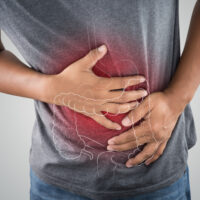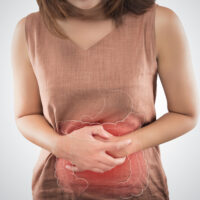Things to keep in mind while checking your credit report
Credit reports are statements that carry information about an individual’s credit score and history, spanning everything from current debts, history of bill payments, and other relevant financial details. Additionally, they can include information about a person’s place of work and residence. Moreover, if they have ever been arrested, filed for insolvency, or sued, that information, too, can be found in their credit report.
What do credit reports do?

Credit reports are thoroughly examined by a lender to decide whether a borrower is fit for a loan or credit. Moreover, it is also through these reports that the cost one bears on the loan (interest rate) is decided. Unfortunately, in most cases, there is no clear distinction between the reports that are used by employers or creditors to analyze someone’s creditworthiness. So let us delve a little deeper:
Who prepares and maintains credit reports?
There are credit reporting agencies (CRA) that maintain and collect every information that is a part of credit reports. Each CRA has its own set of records. Moreover, they usually do not have all the information relating to all your payments and accounts. There are three essential CRAs in the country, namely Equifax, TransUnion, and Experian. Though there will be differences in the reports of the three CRAs, one, in no way, can decide which of the three’s reports is more accurate or authentic in comparison to the others. However, in most cases, all of the information present in these reports will be accurate.
It is crucial to keep regular tabs on credit reports to ensure that the financial as well as personal details included in them are correct. Credit reports are also a good way to ensure that no person is operating a fraudulent account under your name. It is important to ensure that all information mentioned in your financial documents and records is accurate, and to get it rectified if it is not.
How to get a credit report for free?
Everyone is eligible to get a free credit report from any of the three agencies. These are agencies that you can reach out to, to get your annual no-cost credit report. You can either request all three of them at one time or each at a different time of the year. There are three ways in which you can get a credit report for free, as listed below:
- Get it online
To avail of your online credit report, you can visit AnnualCreditReport.com, which is collectively managed by the three agencies to offer free credit reports.
- Phone them
Getting a copy of the report is also possible by phoning the concerned authority, who can be reached on 1-877-322-8228. Those seeking teletypewriter (TTY) services can call 711 and then request to be connected to 1-800-821-7232.
- Mail them
It is also possible to get your credit report via mail, for which a request form needs to be filled (it can be found on the Federal Trade Commission’s official website) and sent to the following address:
Annual Credit Report Request Service,
PO Box 105281
Atlanta, GA 30348-5281
What if the request for the report is denied?
In case the request for the report is denied, you can get in touch with the concerned agency and request them to look into the matter. In this correspondence, the agency will first present before you the reasons for denying you the credit report. Following it, they will help you with relevant suggestions on what you should be doing next. In many cases, you will be pointed towards those bits of information that may have been incorrect in or missing from your application. However, if nothing works and your complaint is not yet resolved, you can reach out to the Consumer Financial Protection Bureau (CFPB) for further assistance.
Why you should regularly check your credit reports
Checking your credit report or score at uniform intervals is known as the continuous assessment of credit. Though it is a simplistic action that is done on your end, it can bring in plenty of long-term benefits. Here are some perks of regularly assessing credit reports:
- It helps you stay aware of your creditworthiness
With the emergence of fintech companies has come greater awareness of our credit. With these companies, it is comparatively easier for us to check ur credit scores from time to time. Also, there is no limit on the number of times you can check your scores. This, in turn, leaves you in better control of your financial situation. When you have a better awareness of your score, it is easier for you to take remedial steps towards improving it.
- You can get errors rectified immediately
Whenever you borrow a particular sum of money from a lender, they are going to inform the authorized credit bureaus about your repayment mannerisms. The report will also contain the necessary details relating to your prepayments and the settling or closing of your credit accounts. However, what you might not know is that these credit bureaus do not have any way of finding out if a particular piece of information received by them is correct or not. Moreover, they do not even have the authority to edit this information on their own. Thus, the entire ordeal of getting a mistake, if any, rectified in the credit report has to be borne by the borrower. You can do this only if you are keeping a close check on your credit report and analyzing your scores repeatedly.
- You can stay away from hard inquiries
Whenever you submit an application for a loan, the lending agency that you reached out to will get in touch with the authorized credit bureau. They will then request your credit report from them and check your score. Such inquiries that the lending agencies make to the bureaus are known as the hard inquiries. Whenever an agency makes a hard inquiry, it will be counted, and the same will have an impact on your score. Therefore, when you have frequent inquiries in your name, it will have a deteriorating effect on your score. Moreover, at times, people are only wanting to build credit. If a bank sees that as your sole agenda, it might reject your request for credit. And if you reach out to the bank for credit frequently or have rejected credit requests in your name, you will come across as credit-hungry to the bureau.
So if you only desire to know your score, then it is best to simply ask about it. This will fall under the category of soft inquiry, and such inquiries have no impact on the credit report. Thus, instead of applying for credit and your request getting rejected, it is advisable to seek a loan only after checking your credit score. It will improve your chances of getting a loan, and will also help you in avoiding rejections.
- It helps you get a better rate of interest
As a borrower, your aim is to get a loan at the lowest interest rate possible. But how can that be made possible? This can happen only if your credit score is decent. A lot of banks offer incredible rates to borrowers whose credit score is 760 or above. It is imperative to understand that in no time, it will become a credit requirement for all banks. When you have a thorough knowledge of your credit score, you can negotiate with the banks for a cheaper rate of interest.
What affects the score in your credit report?
There is a bunch of things that have a direct impact on your credit score. If these factors are worked out, your credit report will naturally look better, which will, in turn, help you land a loan at a better rate of interest. Here are a few determinants of your credit report:
- How good you have been with your payments
To begin with, approximately 35 percent of your credit score is your past-payment history. So if you pay your utility bills or any other dues at the right time (preferably ahead of the due date), you have a better chance at having a good credit score. On the other hand, grave payment disasters, such as bankruptcy, tax liens, collections, charge-offs, repossession, and foreclosure, are only a few of the many payment issues that can negatively impact the credit score. If you have been a defaulter, it might be extremely difficult to make the shift to a good credit score or receive approval for a loan with a low-interest rate. So, you must ensure that all your payments are done on time, month after month.
- Degree of debt
The next 30 percent of the credit score is the degree of debt that you have. There are certain calculations, such as your FICO score, which can be taken into account to gauge your degree of debt. Further, your credit utilization ratio (CUR) should not be more than 30 percent. Individuals having a massive debt balance, or a high CUR, will certainly have a poor credit score. Thus, the best way to improve your score is by simply paying off your debt as early as possible.
- Credit age
The next 15 percent of the credit score is determined by the age of your credit. But how does one calculate credit age? Now, from the multiple credit accounts that you may be holding, the age of the account that is the oldest—along with the aggregate age of each of the other accounts—is taken into consideration. To put it simply, the older your credit age, the better your score is going to be in the credit report. CRAs regard your credit age as an important factor in determining how capable you are of handling the credit. For instance, when you open a new account or close an existing one, the average of your credit age would go down. This will have a direct impact on the credit score reflected in your credit report. Hence, it is not quite advisable to start multiple accounts in one go.
- Credits that you have taken
Primarily, there are two types of credit, namely installment loans and revolving accounts, which determine credit score by ten percent. Having both types of credit is certainly beneficial for your score. Besides having a student loan, credit card, or a personal loan, you can build more credit by owning assets such as a home or car.
- Credit inquiries that you make
The last ten percent of the determination can be made by the number of inquiries that you make for your credit. So every time a new application for which an assessment of your credit is made, it will reflect on your credit report. Of course, making an inquiry or two does not harm the credit score but if the inquiries are frequent, especially in a short interval of time, it could cost you a lot of points, so beware. Thus, for a good score, it is mandatory to keep your inquiries to the minimum. However, there is an important thing to be noted here. Only the inquiries that have been made in the past one year would be considered to determine the score. Moreover, inquiries that are older than two years are completely wiped off from the credit report.
As has already been stated above, checking a credit report is not going to negatively affect the score in any way, as it is considered a soft inquiry, and can be done as many times as is necessary. There are also a few factors by which your credit score remains unaffected. They are:





